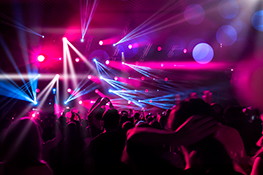Designing a Stage Lighting Rig: A Step-by-Step Guide for Beginners
Understanding Your Space and Show
Before you even think about purchasing fixtures, you need a firm grasp of your performance space. Measure the dimensions carefully, noting ceiling height, wall placement, and any potential obstructions. Consider the type of performance – a small intimate concert will have vastly different lighting needs than a large-scale theatrical production. Sketch a simple floor plan, noting the stage, audience area, and any significant architectural features. This will form the foundation of your lighting plot.
Choosing the Right Fixtures: A Beginner’s Toolkit
For beginners, a versatile and cost-effective kit is key. Start with a mix of fixture types to achieve a balance of functionality:
LED Par Cans: The Workhorse
LED Par cans are incredibly versatile. Their adjustable color temperature and dimming capabilities offer broad creative control, making them suitable for washes, backlighting, and accent lighting. Consider investing in a variety of beam angles (narrow, medium, wide) to cater to different needs.
Fresnels: For Focused Illumination
Fresnels provide a smooth, soft light ideal for highlighting actors or specific stage areas. Their adjustable beam size and focus allow for precise control over the light’s intensity and spread.
Ellipsoidals: Precise Spotlights
Ellipsoidals offer the most precise control, allowing for sharp, focused beams with adjustable gobo patterns (shapes projected onto the stage). While more expensive than Pars, they are invaluable for creating dramatic effects and highlighting details.
Moving Heads: Adding Dynamics (Optional)
Moving heads add an element of dynamism, allowing for automated panning, tilting, and color changes. While not essential for beginners, they dramatically enhance the visual spectacle. Consider these as an upgrade once you’ve mastered the basics.
Creating a Lighting Plot: Bringing Your Vision to Life
A lighting plot is a detailed diagram illustrating the placement and function of each lighting fixture. Using your floor plan as a base, meticulously document:
Fixture Placement and Type:
Specify the exact location of each fixture, its type (Par, Fresnel, Ellipsoidal, etc.), and its intended function (wash, backlight, key light, etc.).
Wiring and Power Distribution:
Plan your power distribution carefully to avoid overloading circuits. Use appropriate cabling and ensure all connections are secure. A qualified electrician is recommended for complex setups.
Color and Intensity:
Note the desired color and intensity for each fixture. This will be crucial during the programming phase.
Programming Your Lighting: Bringing It All Together
Once your rig is installed, you can begin programming your lighting console. Start with basic cues (pre-programmed lighting states), gradually building complexity as you become more comfortable.
Understanding Your Console:
Familiarize yourself with your lighting console’s functions and capabilities. Many consoles offer user manuals and online tutorials.
Creating Cues:
Start by creating basic cues for each scene or moment in your performance. Gradually refine these cues, adjusting intensity, color, and gobo patterns to achieve the desired effect.
Safety First: Essential Precautions
Stage lighting involves working with high-voltage electricity. Always prioritize safety:
Never work on live equipment.
Ensure power is switched off before making any connections or adjustments.
Use appropriate safety equipment.
Wear safety glasses and gloves when handling lighting equipment.
Properly ground all equipment.
Ensure that all equipment is properly grounded to prevent electrical shocks.
Consult a qualified electrician for complex installations.
Don’t hesitate to seek professional help when needed.
By following these steps, you can create a stage lighting rig that enhances your performances and brings your vision to life. Remember, practice and experimentation are key to mastering the art of stage lighting.


 Auditorium Construction Services
Auditorium Construction Services 